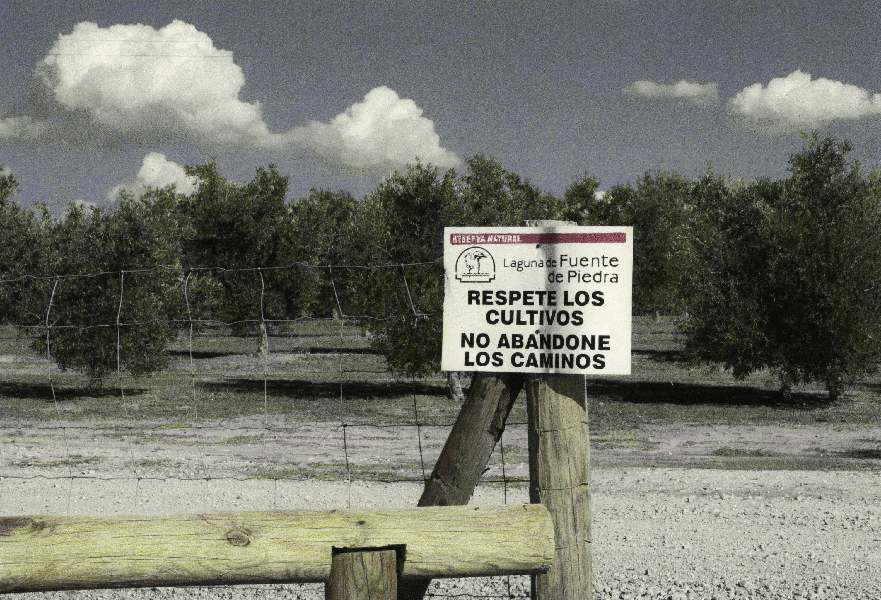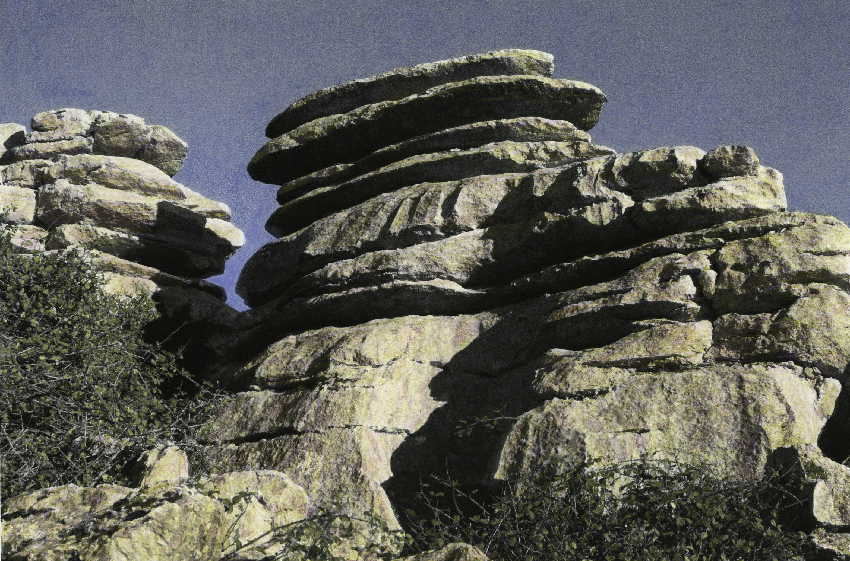
Laguna de la Fuente is the largest lagoon in Andalusia and a very important nesting site for flamingos on the Iberian Peninusla. The best time to see flamingos is between February and July. Since it was October, we weren’t sure we would see any.
We headed down a trail in search of flamingos or other birds but the trail veered away from the water and all we saw were a few rabbits.
It’s discouraging to be hiking along with a deep gully and tall trees between you and your object of desire so we retrieved the car and drove through the olive groves on the other side of the Laguna. The olive trees spread out for miles in orchards of red clay. The fall rains had eroded much of the land and left large standing puddles.
After a time, we went back and once again hiked down the trail, constantly veering away from the water until the trail ended abruptly at a gate.
There is a nice sign here that says Respete los coltivos, no abandone los caminos. We didn’t have a caminos to abandon so we pushed on and headed for a strip of green marked Reserva Natural that ran through the furrows.
The furrows ran right up to the fence so we proceeded with care, stepping between the rows. Our nerve began to falter; we envisioned a farmer headed out to greet us with shotgun in hand! Standing up on tip-toe, we could see the pink birds just a little further ahead.
If we’d known what the sign really said, “Respect the farmers, don’t leave the road,” I doubt we would have made it this far, but ignorance is bliss. We got close enough to get a few shots before losing courage.
Our next destination was El Torcal National Park, the land of karst. We drove high into the mountains to reach El Torcal. Looking around at the mountains and valleys, it’s hard to imagine water ever coming this far inland.
Karst shapes look fragile and unstable in places but they have been here about 150 million years. Karst is created from carboniferous limestone in which the calcium carbonate is washed away leaving a very interesting landscape. The limestone deposits were created when Spain was under the Tethys Sea.

